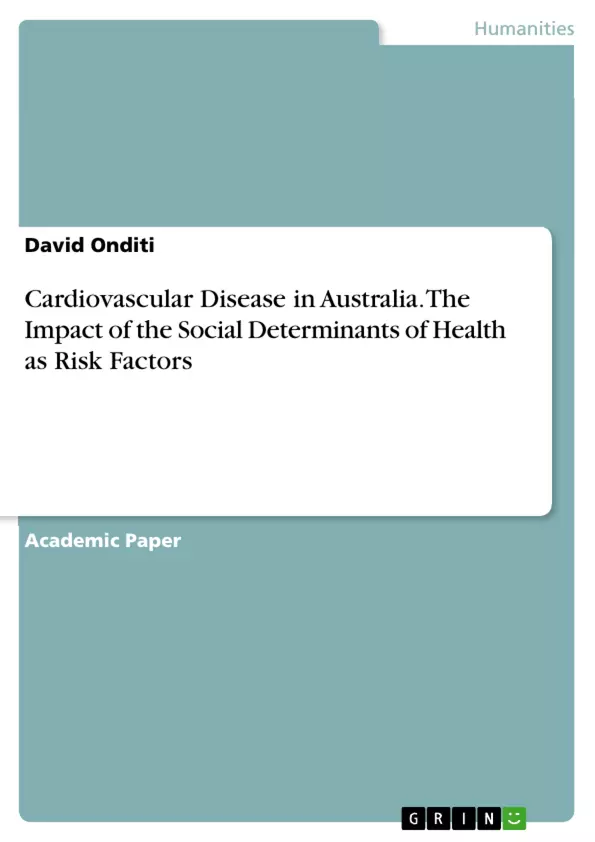The paper will focus on the role of the social determinants as well as the epidemiological transition and inverse social gradient also known as the persistent trend. The impacts of the social determinants in Australia will also be explored and possible solutions and the future directions that medical practice should take to reduce the varied impacts of the social factors on the cardiovascular health.
Cardiovascular disease is one of the leading causes of death for the high-income countries such as Australia. It is projected that it will be the leading cause of death in the world by the year 2030. Majority of the research on the disease has been focused on identifying, modifying and treating the risk factors at the individual level. In spite of the massive achievements, great inequalities persist over time and space.
The increase in the cardiovascular diseases has led to a movement towards the study of the risk factors. The risk factors that are currently being studied include the causes of the disease which include social determinants of health such as the inherent inequalities that are observed in the health between the different regions in Australia.
Inhaltsverzeichnis (Table of Contents)
- Cardiovascular Disease in Australia
- Risk Factors and Prevention
- Social Determinants of Health
- Epidemiological Transition
- Social Determinants and CVD in Australia
Zielsetzung und Themenschwerpunkte (Objectives and Key Themes)
This paper examines the impact of social determinants of health as risk factors for cardiovascular disease (CVD) in Australia. It explores the epidemiological transition and the inverse social gradient, analyzing how social factors contribute to the prevalence of CVD, particularly within Aboriginal communities. The paper also highlights the importance of addressing social inequalities and promoting healthy lifestyles to mitigate the burden of CVD.
- Social Determinants of Health and CVD
- Epidemiological Transition and CVD
- Inverse Social Gradient and CVD
- Impact of Social Determinants on CVD in Australia
- Strategies for Reducing CVD Risk
Zusammenfassung der Kapitel (Chapter Summaries)
- Cardiovascular Disease in Australia: This chapter introduces the prevalence and impact of CVD in Australia, highlighting its significance as a leading cause of death and morbidity. It discusses the historical context of CVD research and the shift towards understanding the role of social determinants.
- Risk Factors and Prevention: This chapter focuses on the identification and modification of individual risk factors for CVD, exploring the key factors identified by the INTERHEART study. It emphasizes the importance of addressing modifiable risk factors to improve cardiovascular health.
- Social Determinants of Health: This chapter defines social determinants of health and explains how social and economic conditions influence individual health outcomes. It highlights the role of healthcare systems in shaping health inequalities.
- Epidemiological Transition: This chapter discusses the concept of epidemiological transition, outlining the stages of societal development and their impact on disease patterns. It explores the shift from infectious diseases to non-communicable diseases like CVD.
- Social Determinants and CVD in Australia: This chapter examines the impact of social determinants on CVD in Australia, exploring the inverse social gradient and the heightened vulnerability of low-income households. It highlights the need for addressing social inequalities to reduce CVD rates.
Schlüsselwörter (Keywords)
The primary keywords and focus topics of this paper include cardiovascular disease, social determinants of health, epidemiological transition, inverse social gradient, health inequalities, Aboriginal communities, Australia, risk factors, prevention, and health policy. These terms encompass the core concepts and research themes explored throughout the text.
- Arbeit zitieren
- David Onditi (Autor:in), 2017, Cardiovascular Disease in Australia. The Impact of the Social Determinants of Health as Risk Factors, München, GRIN Verlag, https://www.hausarbeiten.de/document/499799


